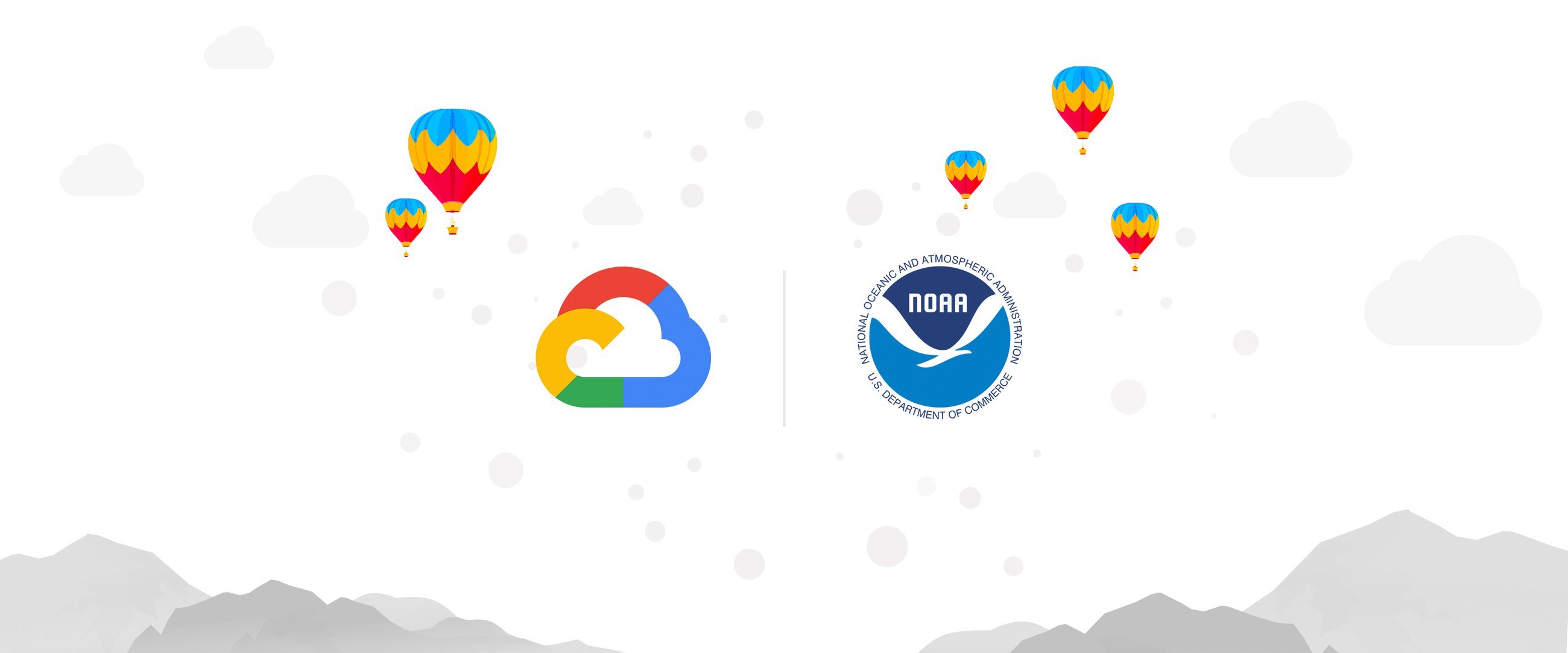Big data, big world: new NOAA datasets available on Google Cloud

Shane Glass
Developer Advocate
Our natural world is full of wonders, and full of data about those wonders. The U.S. National Oceanic and Atmospheric Administration (NOAA) documents the world and its changes by gathering and distributing scientific data. Its goal is to keep citizens informed about what’s going on in the world around them—from the ocean to the sun. Their mission includes understanding and predicting changes in climate, weather, oceans, and coasts, and conserving and managing coastal and marine ecosystems and resources.
We’re pleased to continue our partnership and expand our collaboration with NOAA to share its valuable data. A vast trove of NOAA's environmental data is now available on Google Cloud as part of the Google Cloud Public Datasets Program and NOAA's Big Data Project, opening up possibilities for scientific and economic advances. We are thrilled to make this valuable data available for your exploration. Google Cloud will host 5 PB of this data across our products, including BigQuery, Cloud Storage, Google Earth Engine, and Kaggle. The stored data is available at no cost, though usual charges may still apply (processing, egress of user-owned data, for example).
The agency is providing public access to its environmental datasets in the cloud in accordance with its open data policies. NOAA generates tens of terabytes of data every day from satellites, radars, ships, weather models, and other sources. All that data is directly available to the public, but its availability on public cloud platforms makes the data a lot easier to explore and avoids the costs and risks involved with federal data access services.
NOAA’s data holds plenty of possibilities. “The NOAA Big Data Project is focused on improving the accessibility of data while also maintaining a fair and level playing field for everyone—with free, full, and open access to the original NOAA data,” says Ed Kearns, Ph.D., acting chief data officer at the Department of Commerce, the parent organization of NOAA. “This approach will help spur new lines of business and economic growth while making NOAA's data more easily accessible to the American public.”
What will you discover?
You can explore lots of fascinating datasets without leaving your computer, including real-time satellite imagery, more than 20 years’ worth of the National Water Model, historic storm event data, aggregated lighting strike data, precipitation data back to the 1700s, and data on shipping patterns dating back to the 1600s. Some of the potential use cases for these datasets include:
Earlier detection of wildfires
Retail sales forecasting
Logistics planning (fleet management)
Automated marine mammal species identification
Solar forecasting
Real-time and near real-time disaster information services
Disaster response preparedness
Avian migration analysis
Impacts of weather-related events on deliveries
Making these datasets available means there are now lots of new avenues for finding and solving environmental impact issues. “Technology is transforming how we understand our ever-changing world,” said Kate Brandt, Google Sustainability Officer. “Through the NOAA Big Data Project, Google Cloud can help researchers, innovators, and organizations analyze data to tackle a range of environmental challenges—regardless of their size or computing power.”
The sky’s the limit for analyzing NOAA’s datasets and adding in other data to find interesting and useful results. To spark your imagination, check out how a team at Google used NOAA data to identify humpback whale calls.
Happy exploring on your data travels! And learn more about how weather and climate data can support your analysis on our weather and climate page.

